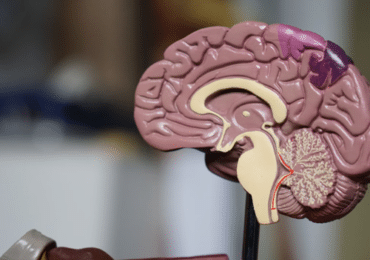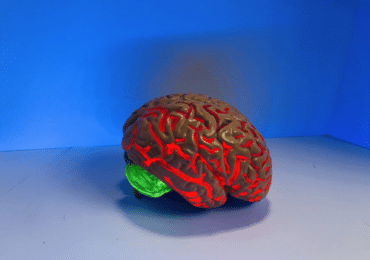Traumatic Brain Injuries (TBIs) are a critical public health concern that pose a substantial burden on victims, families, and society as a whole. TBIs can result from various incidents, ranging from sports injuries to vehicle accidents to falls, leading to broad spectrum of physical and psychological effects. Understanding the severity, treatment options, and preventative measures for TBIs is essential for accident victims, their caregivers, and society at large. This guide aims to provide a comprehensive understanding of TBIs, offering insights into the causes, symptoms, and latest treatment options, as well as providing practical advice on living with TBIs and the resources available for support. Through spreading this knowledge, we hope to contribute to mitigating the impact of these injuries and improving the quality of life for those affected.

Understanding the Causes of TBIs
The causes of Traumatic Brain Injuries are vast and varied. Some common causes include falls, especially prevalent among children and the elderly, vehicle-related collisions, violence, such as gunshots or physical assault, and sports injuries. It’s important to note that these injuries can occur even without a direct blow to the head, such as in cases of whiplash or other forms of violent shaking. Understanding these causes can aid in implementing preventative measures and ensuring swift and appropriate action when such incidents occur.
A lot of the research into TBIs has focused on understanding and preventing sports-related injuries. It is widely understood that contact sports, such as football, rugby, ice hockey and boxing, all carry a risk of TBI due to the intensity of physical contact involved. The latest studies have enabled organizations such as the NFL, NHL and FIFA to create comprehensive safety protocols in order to minimize the risk of TBIs. It is important to note, however, that these injuries can still occur even with adequate safety protocols in place.
Identifying Symptoms and Signs of TBI
The signs and symptoms associated with traumatic brain injuries are wide-reaching, and vary greatly depending on the severity of the injury. In some cases, milder symptoms may initially go unnoticed, while in more severe cases, the individual may present physical signs such as loss of consciousness or seizures. Other symptoms can include headaches, memory problems, changes in mood and personality, difficulty speaking or understanding language, impaired cognitive functioning (such as confusion), sensory disturbances including hearing and vision problems, and drowsiness.
It is important that any suspected TBI is immediately addressed by a medical professional. If left untreated, the injury can worsen and lead to life-threatening complications, such as brain swelling or bleeding in the brain.
Legal Action

The legal implications of Traumatic Brain Injuries vary greatly. This is largely dependent on the cause and severity of the injury, as well as a number of environmental factors. If the injury was a result of a car accident, for instance, a legal claim may be possible depending on the responsibility of the other party. In this case, an attorney should be consulted in order to ensure that all legal avenues are explored. Whether you are looking for a head-on collision attorney in Las Vegas, or you need one in a different area, an experienced lawyer can help make sure that you get the compensation and justice you deserve. In other cases, such as a sports-related injury or a fall in public premises, legal action may still be possible depending on the circumstances of the incident.
Namely, a lot of liability in these cases is dependent on negligence or breach of duty from the responsible party. Again, consulting an attorney is the best way to ensure that you are able to pursue legal action and get the necessary help.
Treatment Options for TBIs
Treatment options for traumatic brain injuries (TBIs) are diverse, and tailored to each individual’s injury profile. Initial medical interventions may involve medication to reduce swelling or bleeding, and in certain cases, surgical procedures. Subsequently, long-term rehabilitation is typically necessary, encompassing physical therapy, occupational therapy, speech/language therapy, psychological counseling, and various other forms of rehabilitative care.
For example, physical therapy helps the individual learn to reacquire their strength and motor skills, while occupational therapy focuses on teaching them daily living tasks. Psychological counseling is also important for helping individuals cope with the psychological impact of TBIs and develop strategies to better manage their emotions.
Quality of Life and Living with a TBI

Living with a traumatic brain injury (TBI) can be both physically and psychologically challenging. It is important to have realistic expectations about the condition, while still recognizing that life after a TBI can still be fulfilling despite any limitations imposed by the injury.
Survivors often face daunting roadblocks, grappling with frustration and helplessness following an accident. Yet, with the unwavering support of family members and caregivers, they can conquer these emotions and adapt to their new circumstances.
Moreover, a wealth of resources awaits those with TBIs, ranging from dedicated support groups and organizations to cutting-edge cognitive rehabilitation programs. These invaluable resources empower individuals to embrace their injuries, learn to live with them, and navigate the ever-changing landscape of their lives.
Coping Strategies and Self-Care for TBI Survivors
Navigating life after a traumatic brain injury (TBI) demands a combination of support, resilience, and self-care. Recognizing the importance of these elements is key to improving the quality of life for survivors. Adaptation to new routines and self-care strategies, including adequate sleep, balanced nutrition, and regular physical activity, can significantly aid recovery. Stress management techniques such as meditation, deep-breathing exercises, and mindfulness can also be beneficial in handling the emotional challenges that accompany a TBI. It’s crucial for survivors to remember that while this journey may be strenuous, they are not alone. Their tenacity and strength combined with the support of their caregivers, healthcare providers, and the wider community can make a profound difference in their healing journey.
Traumatic brain injuries (TBIs) are a serious health concern with wide-ranging implications. The impact of such injuries extends beyond the physical domain, influencing emotional, cognitive, and social aspects of an individual’s life. However, with the right treatment, support, and self-care strategies, individuals can lead fulfilling lives post-TBI. TBI survivors demonstrate remarkable resilience, adapting to new routines and challenges, and finding ways to thrive despite their circumstances. Remember, the journey of recovery does not have to be solitary – caregivers, healthcare professionals, support groups, and legal advisors all play important roles in this process. With continued research, improved safety protocols, and advancements in treatment, the outlook for TBI survivors continues to improve. So, whether you’re a TBI survivor, a caregiver, or a concerned friend, remember that you’re not alone in this journey, and that help is always available.

